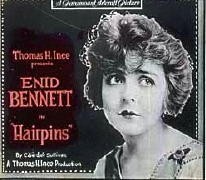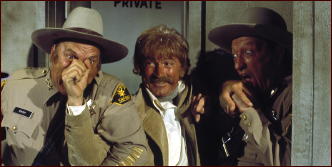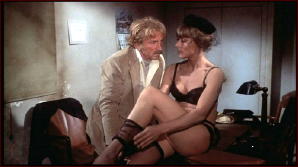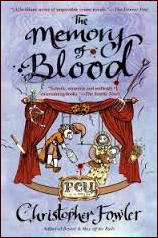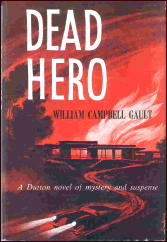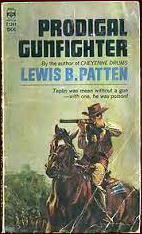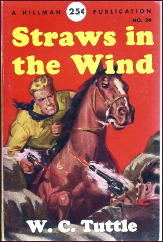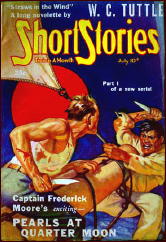Reviewed by DAVID VINEYARD:
LORA LEIGH – Deadly Sins. St. Martin’s, paperback original, February 2012.
A definition first: today the term romantic suspense too often refers to books that are primarily pornography * for women. And before anyone objects, I am not talking about writers like J.D. Robb, Janet Evanovich, Iris Johansen and others sometimes lumped into the field. The books discussed here have their own section on most news stands well away from those better more mainstream writers, though increasingly they are crowding out everything else save for some big name bestsellers.
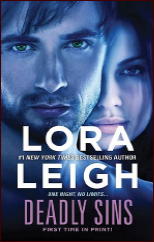
Lora Leigh is one of the more prolific and popular writers in the field of romantic suspense, a legitimate NY Times bestselling writer (not the honor it once was), with a strong fan base and loyal audience.
Her books vary from romantic suspense to borderline science fiction and fantasy. I found this one at the Dollar Store, so it falls into the category of what a friend christened Dollar Store Wonders (these run the gauntlet from overprints of bestsellers to surprisingly good books to pure pap), some of which are delightful surprises while others … others are by Lora Leigh.
Deadly Sins is part of Leigh’s “Sins” series. When this was published in 2012 she had written some sixteen novels in three series in romantic suspense including the Elite Corps and SEALS series (she also pens a popular series known as the Breeds about metahumans enhanced by animal DNA).
This entry in the Sins series is set in contemporary Colorado in troubled Corbin County where the Sweetrock Slasher has been preying on young women, including undercover FBI operative Skye O’Brien’s sister Amy. Skye and her older sister Amy are both the foster children of the governor.
In general the books are set in generic locales so little time has to be subtracted from the sex scenes.
Skye has come looking for Amy’s killer, her only clue her neighbor, attractive, brooding, loner Logan Callahan (the Brontes have a lot to apologize for) whom she and Amy long had crushes on. She knows Logan didn’t kill Amy, but believes Amy was murdered because Logan flirted with her and showed an interest in her.
The Barons, the powerful and wealthy men who run Corbin County, are out to get Logan, who just incidentally is also an undercover FBI operative. This is involved with a feud between the Corbins and the Callahans, with the Barons wanting an end to the Callahan line, so they murder anyone who Logan shows an interest in so he will have no offspring to carry on the line (really, that’s the plot, I’m not making this up). Three Callahan brothers married daughters of the Barons, and now their bloodline must be purged. It probably didn’t help, as Logan points out, that all three brides were pregnant.
Corbin County is as corrupt as Dashiell Hammett’s Poisonville, and crawling with curiously ineffective FBI agents. Sad to say no one goes ‘blood simple’ on the whole county.
Skye knows all this (the book doesn’t bother with even elementary detective work Skye already knows everything going in, at no point is there any mystery element worth calling that, and what she doesn’t know the reader is told), and plots to make the devilishly attractive Logan her lover to put herself in the crosshairs as the next target.
It doesn’t hurt that she needs to change her underwear every time she even looks at him. So Skye (the soppiest and least professional FBI operative in the history of fiction) parades around half naked in filmy negligees, tight jeans, and teddies to catch Logan’s interest, doing everything but throw herself naked at his feet with a pack of Trojans in her teeth (I’m not exaggerating all that much either — she’s damn near a stalker, at one point he even turns her in for trespass).
Not that Skye is a bad girl or manipulative much less coldly using him (that might herald a good noirish suspense novel with a little depth and characterization). She is already in love with Logan and worries that he is too isolated and alone, so she tries to bond him with a stray puppy, but he wants nothing to do with it because his Corbin grandfather killed his puppy when he was a boy. See, under the tough exterior he’s really just a wounded little boy.
The amount of wordage spent on that puppy will surprise even the most sentimental reader. Old Yeller didn’t get that much wordage in his own book, or half so weepy. Compared to that puppy “Lassie Come Home†was hard boiled.
And critics used to carp about Mr. and Mrs North’s cats.
Did I mention there is an assassin hired to kill someone in Corbin County, but we know he is really an FBI undercover agent, or is he … Either way it doesn’t generate any suspense. At times it seems as if half of the county is populated by villains and the other half undercover FBI agents.
None of this would be out of place in a suspense novel (though it could be better handled), but the only purpose of this book is to get Logan and Skye between the sheets for graphic transformative world-shaking sex. Nor is it euphemistic sex, no ‘pulsing empurpled brands of manhood’ or ‘burning channels of passion’ (sounds like an STD). The men in these are endowed like porn stars, the women are size queens and suffer from perpetual rising damp. Thanks to Skye Logan spends more than half the book with a lump in his trousers while she is panting after him. It’s a wonder anything gets accomplished.
Romantic suspense is a euphemism for pornography for women in publishing today. The sex scenes are graphic and detailed and the language as frank and simple as any porn written. These are not comparable to what Dean Koontz dubbed the Big Sexy Novel. Harold Robbins, Jackie Collins, Jacquline Suzann, Rona Jaffe, Erica Jong, and Grace Metallious were writing children’s books in comparison to this. For that matter so was Lawrence and his Lady Chatterly. There are no John Thomas or Lady Jane moments in these graphic books. I can’t demonstrate how graphic they are here by quoting from the books short of extensive literary bleeping with blank spaces.
Still, compared to their sisters writing vampire and fantasy books these are tame. Those often feature out an out S&M and suggestions of zoophilia what with so many half animal protagonists. At least everyone in these books is human.
All of this might be harmless fun if Lora Leigh could write, but this is an alternative classic of epic proportions. Devoting an entire chapter of Bill Pronzini’s Gun In Cheek to this wouldn’t be out of place. Leigh seems to think syntax is a tax or booze and cigarettes, and even given the grammatical leeway fiction, often dictates this one has a cavalier attitude to the structure of the English language. The actual plot often gets lost among the graphic sex scenes leaving the reader unsure if it was resolved or not.
Leigh can’t even master the comma, dropping them wherever it suits her regardless of what it does to the meaning of the sentence, offsetting phrases and adjectives that not only don’t need offsetting but would not be by any rule of grammar extant.
You may want to read these aloud to get the full effect, keeping in mind a comma is a pause as if for a breath I’ve added the word ‘pause’ in brackets to demonstrate exactly how bad this is:
The serious (pause), quiet question almost managed to throw her off guard.
Suspicion was a vicious (pause), sharp toothed demon that gnawed his mind.
The material molded to her breasts (pause), all the way down to her delicate waist before falling to the floor in a long sweep that trailed majestically behind her.
His hard (pause), corded body tightened.
He almost shuddered in pure (pause), gut wrenching male horror … (I wasn’t aware horror had a sex)
When they married the daughters of the Barons (pause), everyone said that David, Samuel, and Benjamin would bring them to a bad end.
Pretty (pause), dark eyes that almost seemed to mesmerize him… (a comma after ‘him’ could save that one, but it isn’t there.)
I think a few of those gave me whiplash. You can see how annoying that could become in short order.
Complete sentences aren’t her strong suit either:
A lassitude edged with hunger and need.
Hell, not for a man.
And it was liquid.
Held him close to her.
That he would watch out for her. That he would care for her.
A man a woman could find pleasure with.
And he would.
Knew he would never get enough of.
Some of these could be salvaged with a colon or semicolon attaching them to another sentence or even leaving a word out, and a few I’ll give any writer when writing for effect, but not this blatant or consistent. In Leigh’s work they are jarring as a speed bump at a Nascar rally. It isn’t that hard to avoid most of these if she bothered to read Strunk and White — or Dick and Jane.
Dialogue isn’t a strong point either:
“I have a hunger eating my guts for a woman who has happily-ever-afters in her eyes …â€
“… had you been my sister I would have done more to protect you than those who were charged with the task.â€
“This Skye girl, she’s not exactly got an unblemished record.â€
“I will never make such a decision again at three in the morning …â€
Has she ever read a book in English, seen a play, watched a movie or a television show? Who writes or speaks that way? How can anyone believe in a rough tough federal agent going on about happily ever afters in women’s eyes. That’s sub-soap opera level. Even granting that it is hard to make exposition sound natural in dialogue, there is no excuse for syntax that awkward or dialogue that stupid. It’s not romance can’t be done in these, but it needs some concern for character and believability. The hero can say the same thing without sounding as if he wandered in from a teenage girl’s fantasy.
The climax of the plot is secondary to the main characters multiple climaxes in the bedroom in these, very nearly a definition of pornography. She does handle the sex scenes fairly well, but it’s painful getting to them, which come to think of it is a mark of porn in and of itself.
There is little or no effort made to establish Corbin County or Sweetrock, so it is nothing more than a generic small western town that could be in New England or on Mars for all the effort made to make it real to the reader. It’s not much more than a film set, all false fronts and empty spaces behind them.
This one ends in a deserted mountain resort Leigh awkwardly arranges for her hero and heroine to end up in, and with no previous set up.
Reading these you may actually miss those vivid atmospheric houses, manors, and castles of the gothic craze, not to mention the writers. Even bodice rippers offered vivid settings and research. If there are sophisticated talented writers penning these they are doing a good job of hiding themselves. These offer the bare minimum of literary invention, and much of that is borrowed from other sources.
And what do these books offer aside from escapism?
To paraphrase James Carville, it’s the sex, stupid. Of a 115,000 word novel I counted roughly 24,000 words of sex scenes, not counting run ups and thinking about sex. That’s a bit over a fifth of the book, porn by any standard. Even Jackie Collins novels likely only devotes 5% of a book to actual depictions of graphic sex, two or three pages each, no matter how many of them there may be. I don’t recall the notorious Harold Robbins ever devoting an entire chapter to a single sex scene much less two or three (I’m not talking about the lead up to the sexual act, but three chapters describing a single sexual act). These readers wouldn’t read Collins or Robbins though, they write dirty.
These books are a far cry from the time when romantic suspense meant Charlotte Armstrong, Mignon G. Eberhart, Ethel Lina White, Marjorie Carleton, Mary Roberts Rhinehart, Phyllis Whitney, Norah Lofts, Dorothy Eden, Victoria Holt, Mary Stewart, or Mary Higgins Clark. Despite the appellation these are far closer to men’s action books in their dependency on formula and their structure designed to feature so many sex scenes ever so many pages or chapters.
Porn novels roughly provide at minimum a sex scene at least every third chapter (often stretching to two or three chapters as these do), about what you find in these books.
Call them what they are, pornography, and I’m fine with them, but the only suspense is how long the heroine is going to keep her knickers on.
Fortunately these have their own little literary ghetto at most bookstores, but if you buy books at Walmart or Walgreens, the Dollar Store or any news stand, this literary kudzu is everywhere choking off the oxygen for everyone else.
* Most of you probably know the term pornography was coined by a 19th century British minister in the 1860’s writing a review of an exhibit of works of art from ancient Greece depicting prostitutes (the Victorians were much raunchier than we give them credit for in many ways). That’s all the word actually means, works of art and literature about the doings of prostitutes. Here I’m using a broader definition, though you could say some of the writers and publishers are selling themselves as blatantly as any prostitute on any street corner. They are just getting a better return for their services though not delivering the same potential quality. I don’t object to the sale, just the value of the product being offered.
